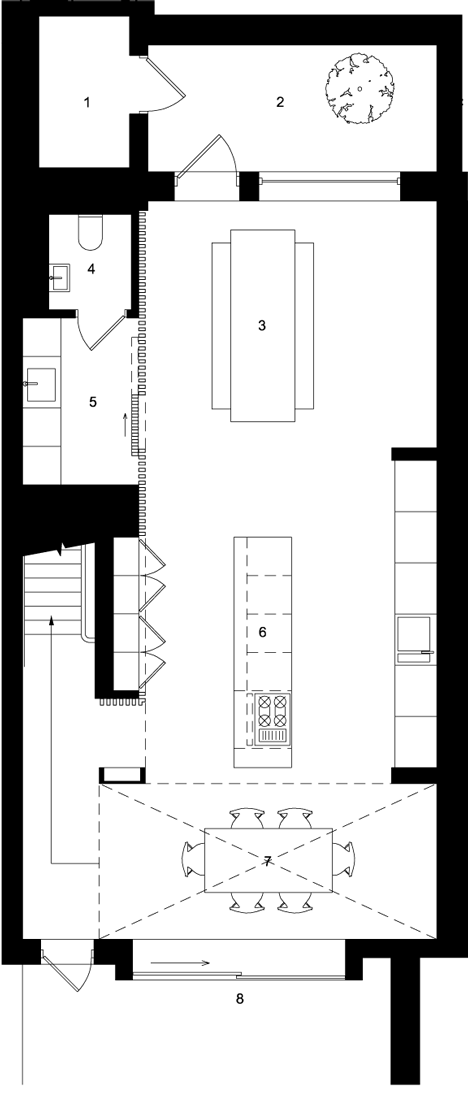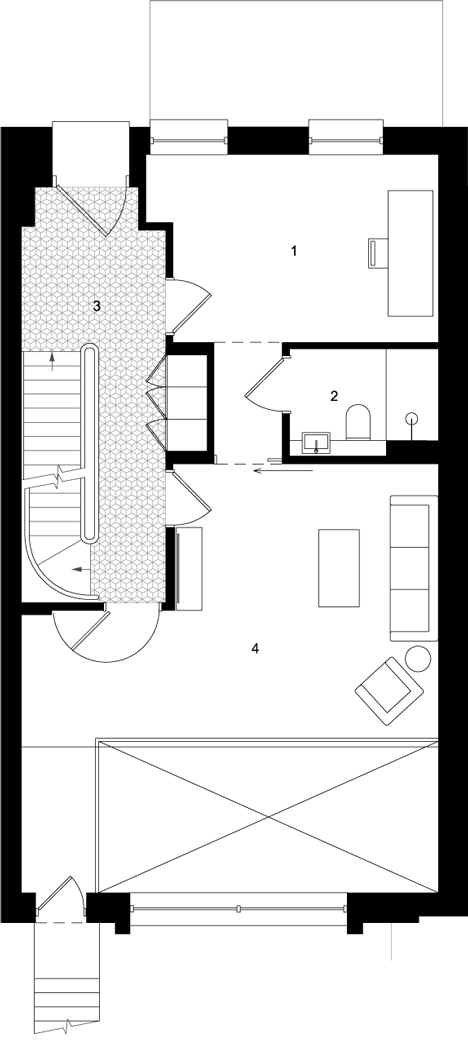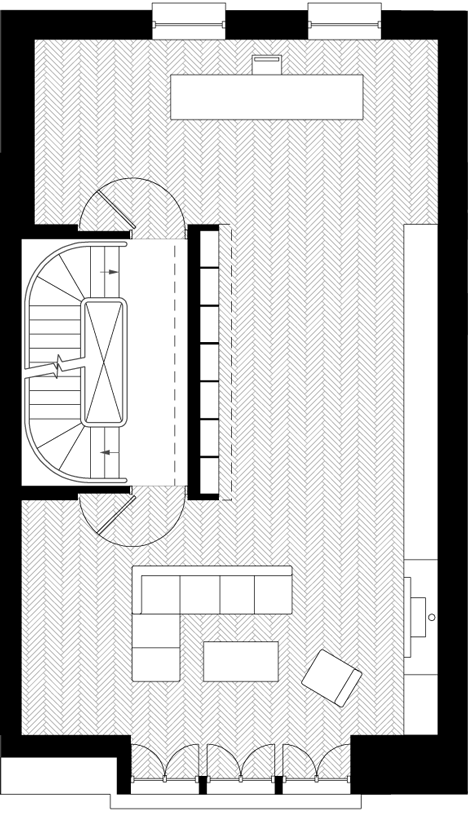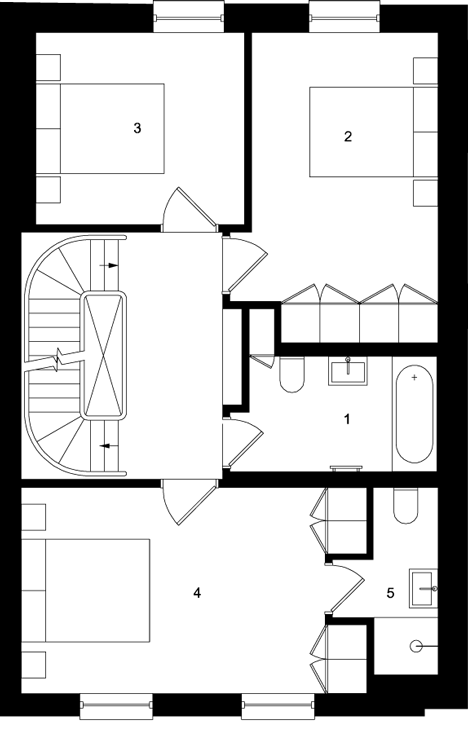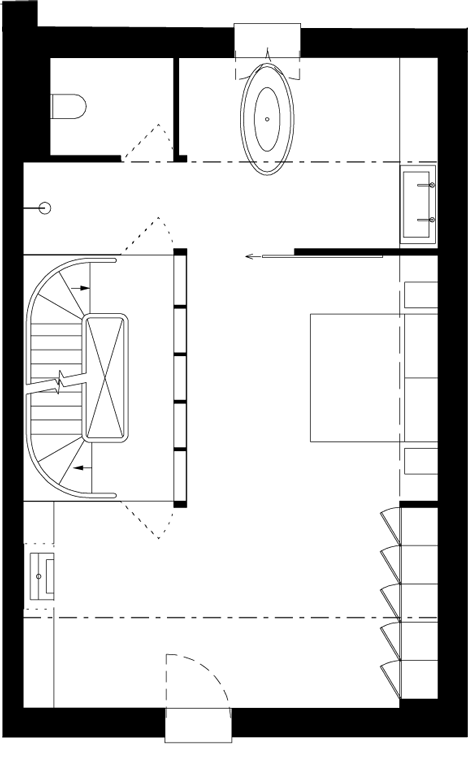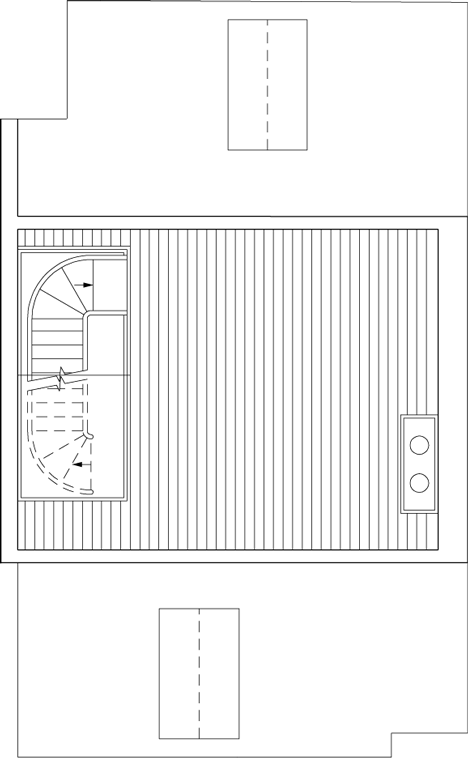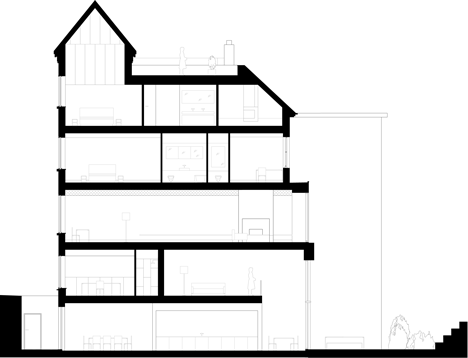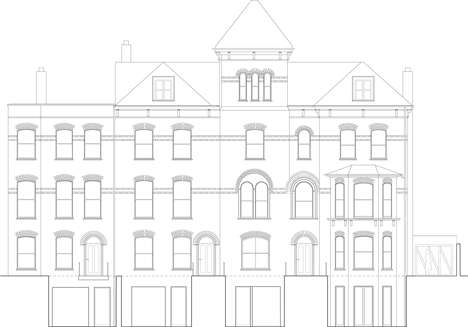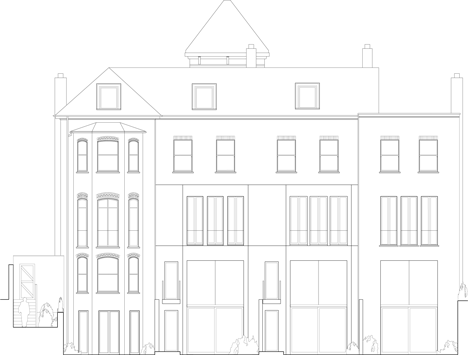Curvaceous oak staircase ascends through converted convent by John Smart Architects
A dramatic oak staircase with a sweeping handrail connects the five storeys of this Victorian convent building in south London, which has been converted into four homes by John Smart Architects (+ slideshow).
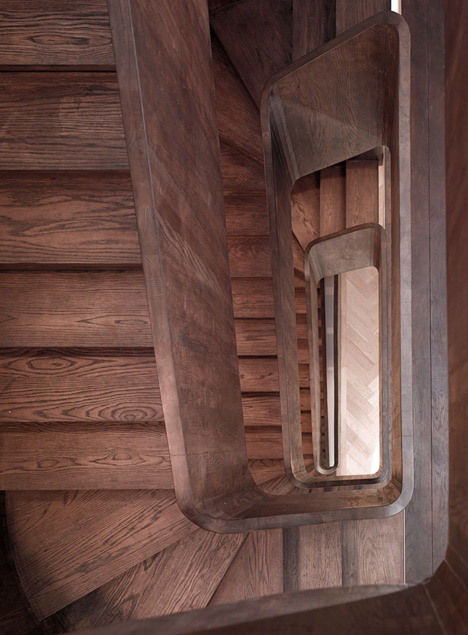
The Old St John's Convent and Orchard was renovated by London firm John Smart Architects to create four five-storey properties that retain the original order of the facades while adding modern interventions and overhauling the interiors.
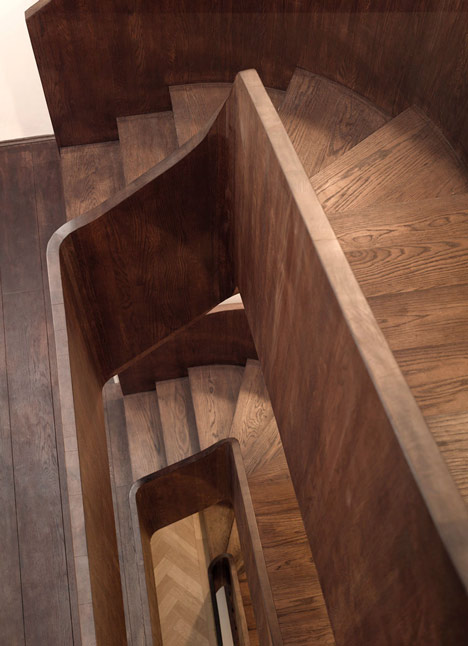
"The distinctive Victorian skin was largely renovated and reinstated to retain as much of the character of the original convent as possible," the architects told Dezeen.
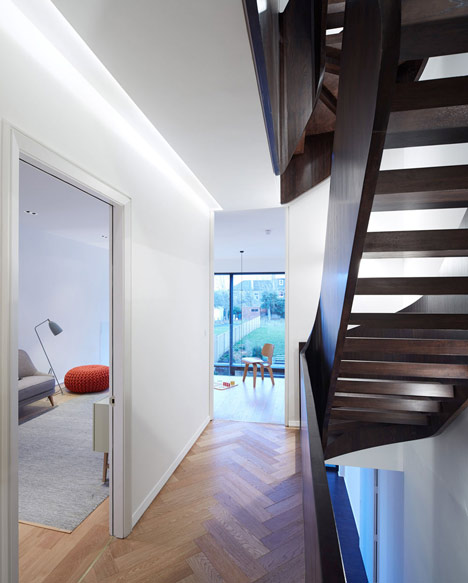
"New interventions remained largely hidden where possible on the front facing facade, whereas the back facade required opening up to benefit from the south facing aspect and to improve visual connections with the large gardens," they added.
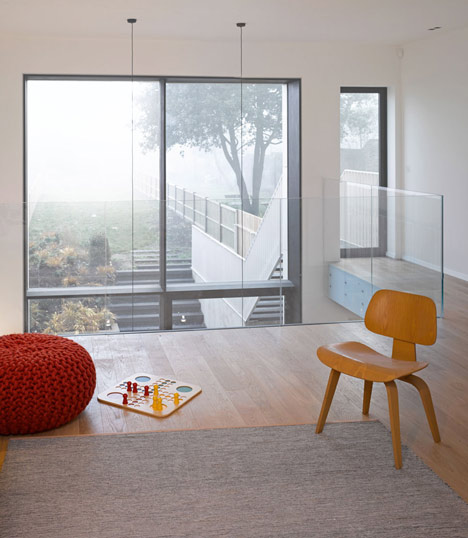
Extensions to two of the properties incorporate large windows and Juliet balconies looking out onto the garden, and are clad in pale limestone that contrasts with the existing facade.
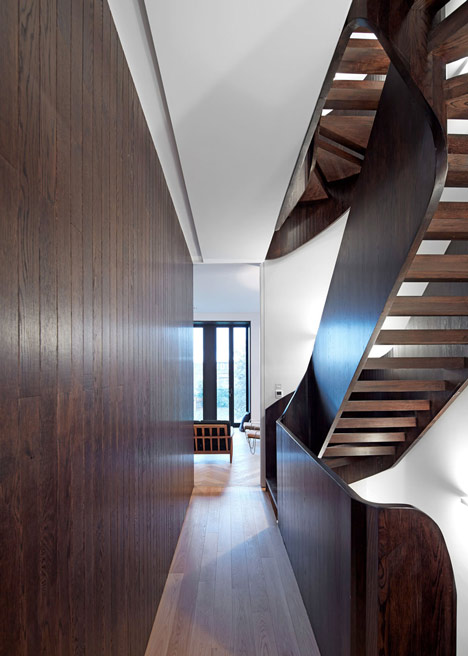
"Moleanos limestone was chosen as a pure, unapologetically modern solid element which contrasted against the original London brick," said the architects.
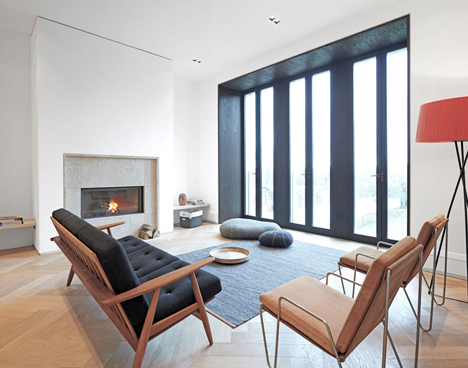
Inside one of the extensions, a double-height void rises from the lower ground floor kitchen and dining area to a reading room above that features a glass balustrade to retain views of the garden.
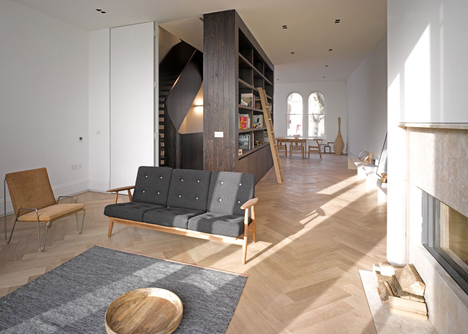
The kitchen floor is made from polished screed, while oak was used for built-in cabinetry and an adjoining partition that screens the utility area.
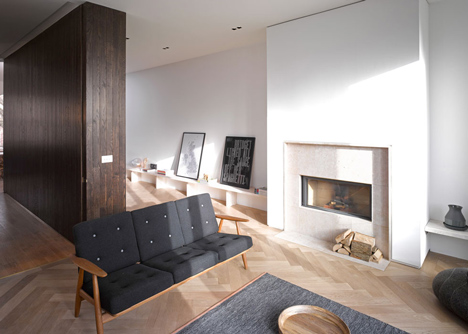
A fluid oak staircase at the centre of the house was constructed from staves with standardised sections and assembled on-site. The wood was exposed to ammonia fumes to darken its colour.
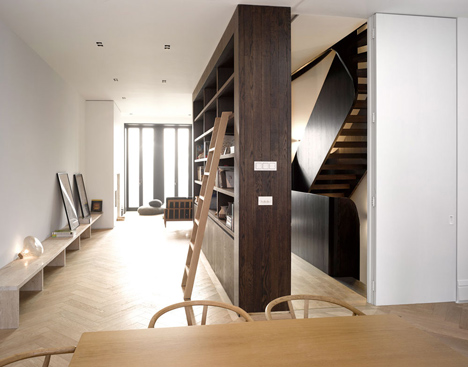
Just two types of wedge-shaped staves were used to build the inner and outer curves that form the handrail and the stringer supporting the treads.
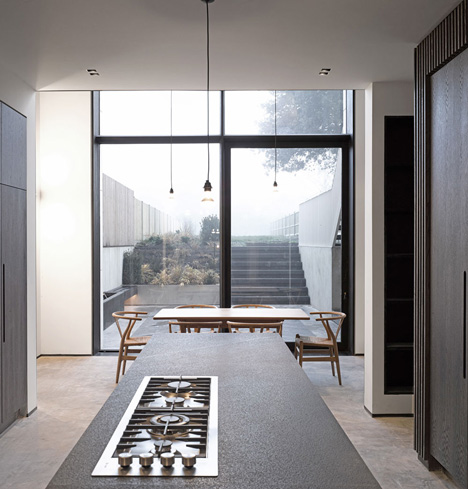
"The stairwell concept was to design a heavy vertical sculptured element, providing a solid core to the overall programmatic framing of the house," the architects explained. "The building's history meant it felt appropriate for the staircase to have a strong robust presence, which suggested dark oak."
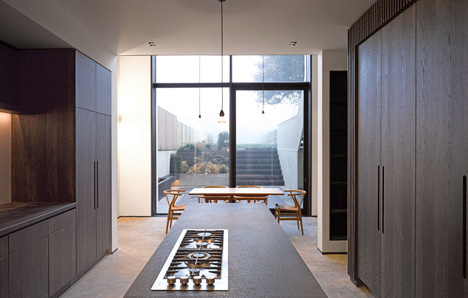
On the original main floor of the convent, a large oak bookcase acts as a dividing wall between a living area and the staircase.
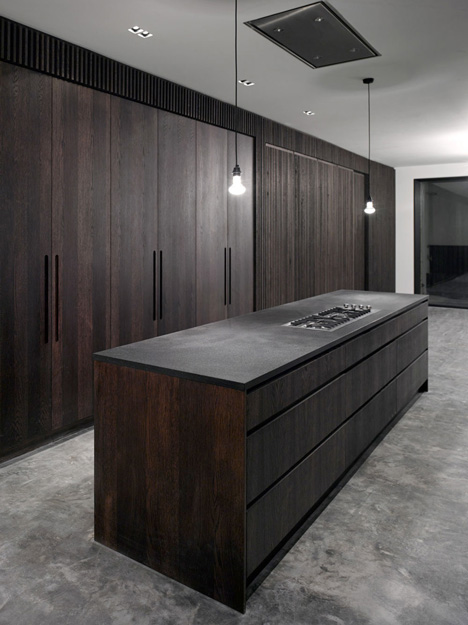
The bookcase is constructed from the same fumed oak as the staircase, creating visual consistency between these two vertical elements while contrasting with the pale herringbone wooden floor.
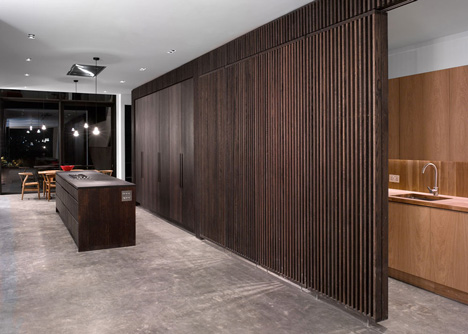
Bedrooms and bathrooms are contained on the second and third storeys, with the staircase continuing to a roof terrace fitted between two sections of the sloping roof.
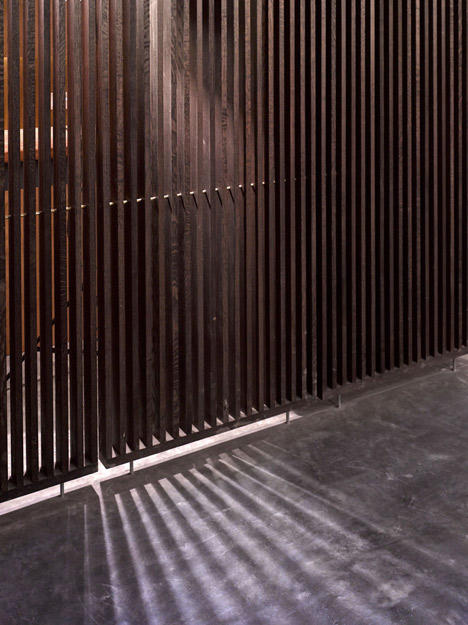
Photography is by Edmund Sumner.
Here's some more information from the architects:
St John's Orchard
Set within a tree lined neighbourhood in South London; a distinctive local landmark has been attentively refurbished and crafted into four elegant houses. The Old St John's Convent and Orchard at 17 Grove Park has been given a fresh lease of life through combining the rich history of the original Victorian building with new contemporary spaces and interventions. Each house is set over 5 floors and spans over 4000 square feet.
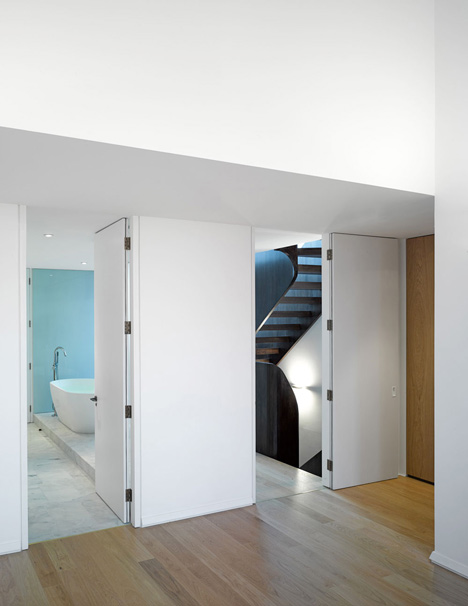
The Great Room Floor
Conceived as an open single space, the Great Room Floor provides three distinct areas within the original ground floor of the convent, whilst still maintaining an open dialogue across the floor.
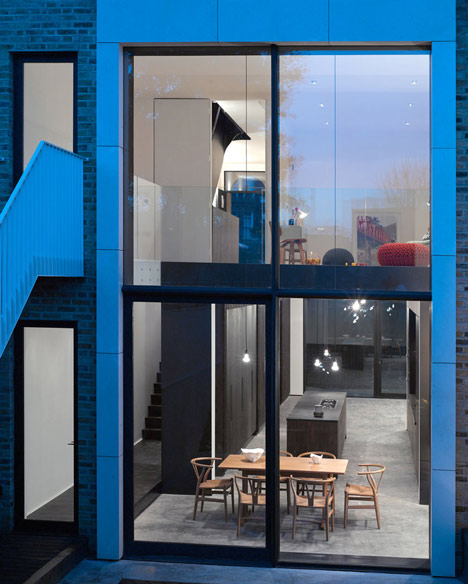
Library
The oak library unit forms a central 'furniture wall' in the Great Room. Concealed full height doors allow space to flow freely around it, creating a fluid space. The fumed oak joinery relates to the fumed oak stair, bringing the verticality of the central core into the spatial dynamic.
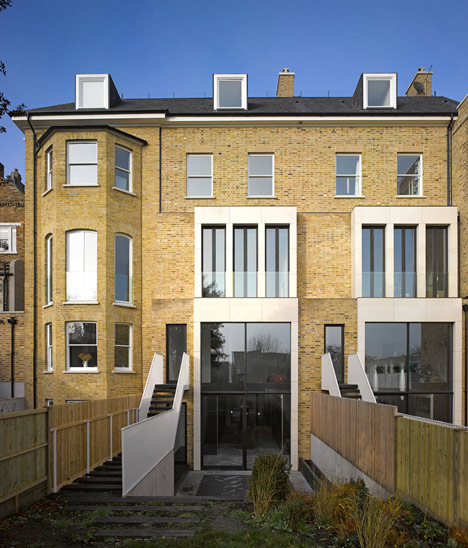
Staircase Design
The five-storey oak stair is constructed using staves of standard section sizes that were laminated into a bespoke form. Crafted in a workshop, the elements were assembled on-site into a seamless flight that rises through the core of the house. Detailing is reduced to a minimum - just two types of wedged-shaped staves were used to achieve the inner and outer curves of the stair, which serves as both stringer and handrail.
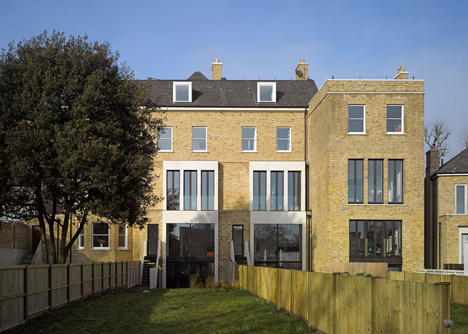
Kitchen and Dining
At the heart of each house is a cooking and dining space situated under a dramatic six-metre high double height void. Framed by a full height oak window and sliding door, it has vistas onto the gardens and terrace beyond. Inside merges with outside, giving a garden backdrop to cooking, eating and entertaining in one light-filled room. The double aspect space can be used to create two distinct atmospheres if desired, each with their own ambiance, for casual family dining and more structured formal dining. A monolithic polished screed floor unifies the space while storage and utility are concealed neatly behind bespoke cupboards and timber clad walls. The kitchen itself is crafted from fumed oak with framed black granite oak doors and an Italian white marble worktop.

